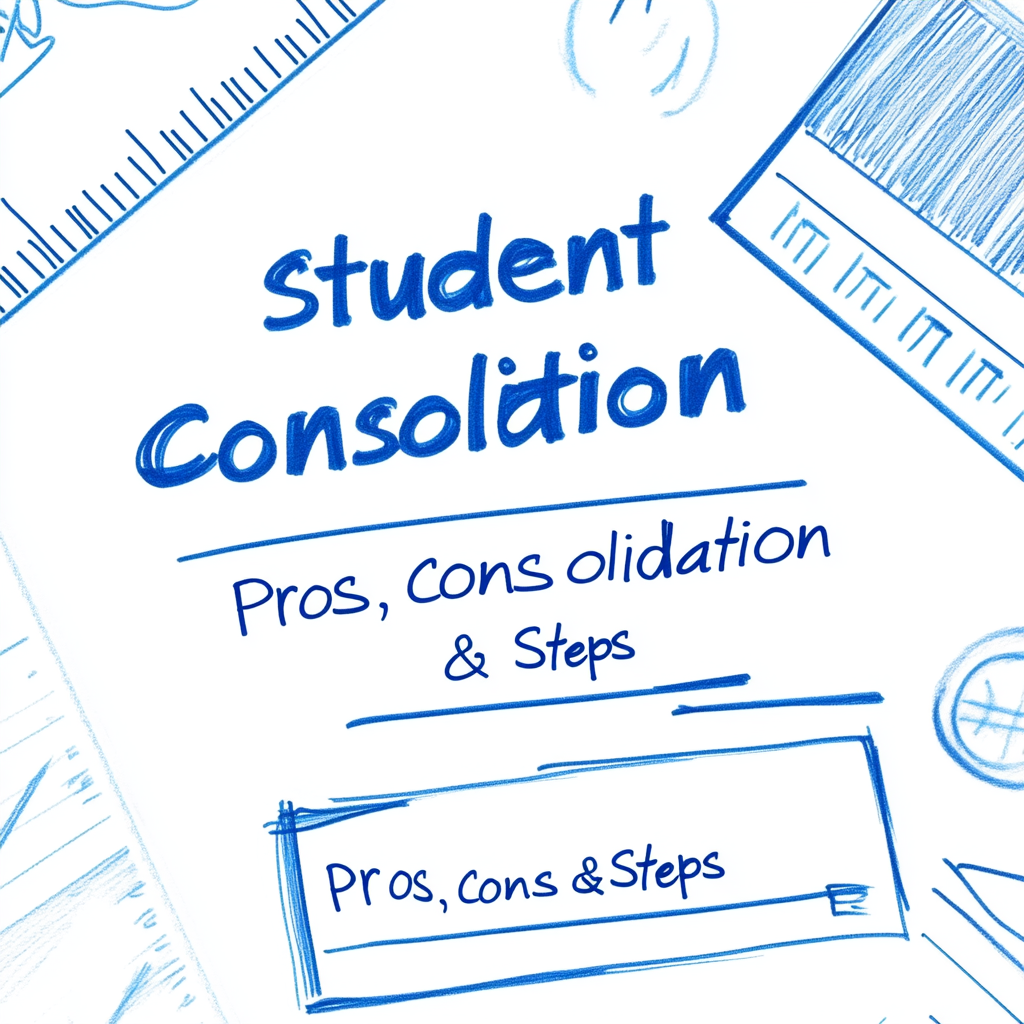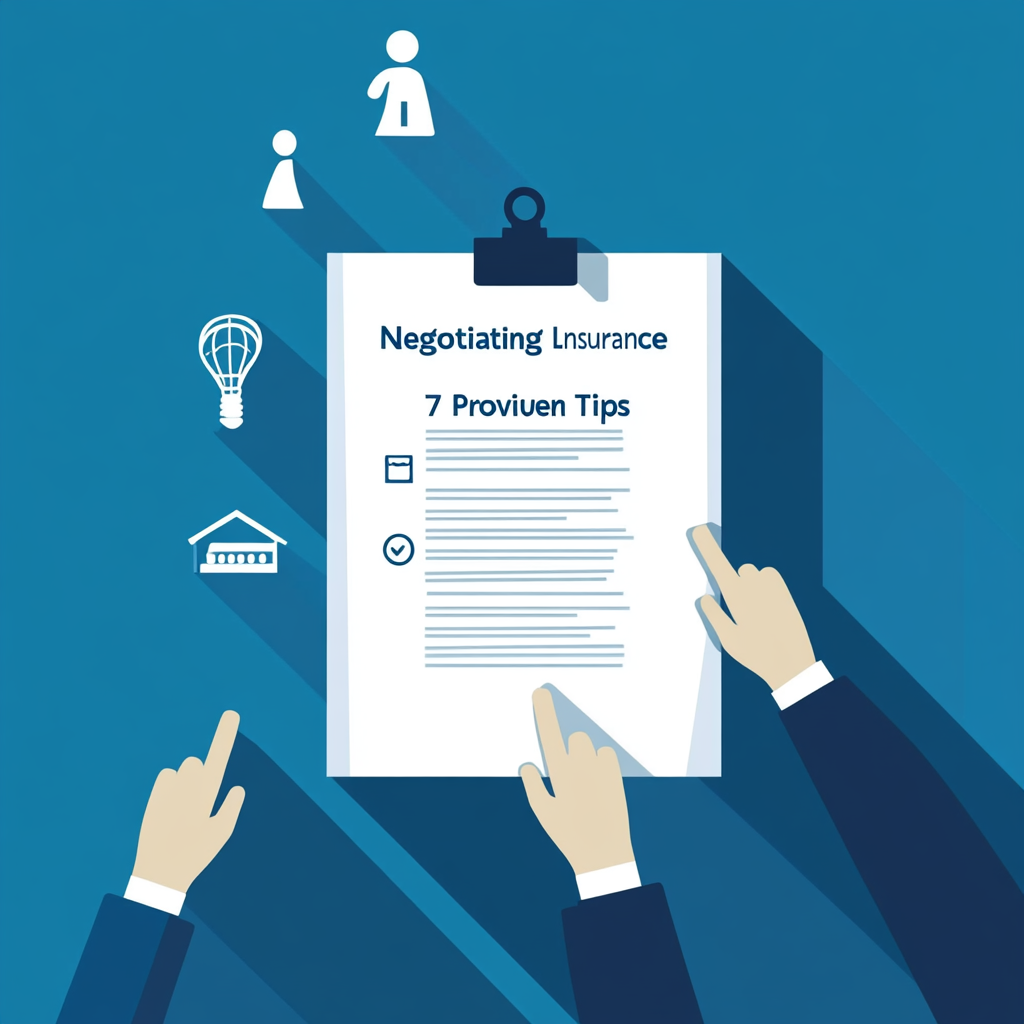1. Introduction
Managing multiple student loans—with different servicers, interest rates, and payment schedules—adds stress and increases the risk of missed payments. Student Loan Consolidation Pros focuses on how combining these obligations can simplify your financial life. Beyond a cleaner dashboard, consolidation can offer immediate cash-flow relief, enhanced access to federal protections, and a structured path toward debt freedom. Yet it’s not a one-size-fits-all solution: you’ll need to weigh benefits against potential drawbacks like lost borrower perks or longer repayment horizons.
In this guide you’ll discover:
How federal Direct Consolidation and private refinancing differ
Four major advantages to consolidation—and the trade-offs they entail
Six detailed steps to execute a consolidation with confidence
Essential tools (official federal sites, video walkthroughs, and our own internal guides) to support each phase
At the end, you’ll be equipped to decide whether consolidation aligns with your personal and financial goals. For complementary debt-elimination strategies, check out our article on Proven Methods to Eliminate Debt and integrate consolidation into a broader pay-down plan.
2. What Is Student Loan Consolidation?
Consolidation merges multiple loans into a single new loan, but how it works—and the mechanics behind rate calculations—determine its suitability.
Federal Direct Consolidation
A Direct Consolidation Loan, administered by the U.S. Department of Education, combines two or more federal loans into one. The interest rate is the weighted average of your existing loans’ rates, rounded up to the nearest one-eighth percent. There are no origination fees, and you retain eligibility for all federal repayment plans—Standard, Graduated, Extended, and Income-Driven—and forgiveness programs like PSLF. However, any unique perks on underlying loans (e.g., interest rebates on Perkins Loans) are forfeited upon consolidation.
The process takes 30–60 days: you apply via studentaid.gov, choose your repayment plan, and select (or let the system assign) a servicer. Once approved, your new servicer repays old loans and issues a new account.
Private Refinancing vs. Federal Consolidation
Private refinancing involves a non-government lender underwriting a new loan at a market rate, based on your creditworthiness and income stability. Refinancing can lower interest costs—especially if your credit improved since graduation—and may offer flexible terms (fixed vs. variable rates, shorter durations). However, refinancing disqualifies you from federal benefits: Income-Driven Repayment plans, deferment options, and PSLF become unavailable.
Typically, borrowers blend both approaches: consolidate federal loans to leverage IDR or PSLF, then privately refinance remaining high-interest private loans if financial conditions warrant.
3. Pros of Student Loan Consolidation
Consolidation provides tangible advantages—when applied strategically.
Simplified Repayment
Managing one monthly statement instead of multiple bills reduces confusion, lowers late-fee risk, and centralizes customer service. You establish one autopay, thereby often qualifying for a 0.25% interest rate reduction. Psychology studies show that simplification increases on-time payment behavior by reducing “choice overload,” which can translate into fewer missed payments and a stronger repayment record overall.
Lower Monthly Payments
By extending repayment terms—up to 30 years for consolidated federal loans over $30,000—you can lower your monthly obligation by 10–50%. For example, consolidating a $50,000 balance at a weighted 6% over 30 years yields payments of $299/month versus $555/month over ten years (a 46% reduction). While you pay more interest over the life of the loan, immediate budget relief can be critical for those facing cost-of-living increases or wage stagnation.
Access to Income-Driven Plans
Older loans—FFEL or Perkins—become eligible for IDR plans after consolidation. Plans like SAVE cap payments at 10% of discretionary income and forgive balances after 20–25 years. A borrower earning $40,000/year with $45,000 in loans could see payments drop from $506 (standard) to $223 (PAYE), and eventual forgiveness of remaining debt if income never outpaces the plan threshold.
Restoring Defaulted Loans
Federal consolidation offers a path out of default: by consolidating, you bring defaulted loans into current status, restoring eligibility for federal aid and benefits. After nine consecutive on-time payments, the default notation is removed from credit reports, improving scores by 50–100 points for many former defaulters and opening doors to better credit products.

4. Cons of Student Loan Consolidation
However attractive, consolidation has downsides you must weigh.
Loss of Borrower Benefits
Perkins Loans and Subsidized Stafford Loans often include perks—interest rate rebates up to 100%, loan cancellation for specific careers, or principal reductions for on-time payments. Consolidating these loans forfeits those benefits. Conduct a benefit-loss audit: list each perk, assign a dollar value, and compare against anticipated consolidation gains.
Potential for Higher Total Interest
Longer terms mean more interest paid. A $40,000 Direct Consolidation at 5.58% over 30 years accrues $42,882 in interest, while a 10-year term at the same rate accrues $11,780. Use a loan-amortization calculator to model total interest under various term scenarios and ensure monthly savings justify lifetime costs.
Resetting Forgiveness Timelines
If you’re pursuing PSLF and have already made qualifying payments, consolidating resets your count to zero. Only payments after consolidation qualify toward the 120-payment requirement. For those nearing PSLF eligibility, consolidation can backfire—consider waiting until after forgiveness or using alternative default-rehabilitation strategies.
Impact on Credit Score
Private refinancing triggers a hard inquiry, potentially reducing your score by 2–5 points temporarily. Federal consolidation requires no credit check, making it a neutral event. Plan refinance applications away from other borrowing needs—like mortgages or auto loans—to minimize credit-related delays.
5. Steps to Consolidate Your Student Loans
5.1 Assess Your Loan Portfolio
Begin by creating a detailed inventory of every student loan you hold: federal Direct Subsidized and Unsubsidized Loans, PLUS Loans, Perkins Loans, and any private student loans. For each loan, record the current balance, interest rate, servicer name, repayment status, and any special borrower benefits (such as interest rate reductions or principal rebates). This comprehensive snapshot clarifies which loans most urgently need consolidation or refinancing and highlights any “hidden” perks you risk forfeiting. Use a simple spreadsheet or budgeting app to track these details and update it whenever you receive a new statement.
5.2 Compare Federal vs. Private Options
Next, weigh the differences between federal consolidation and private refinancing. Federal consolidation—via the Federal Student Aid consolidation page—lets you combine all eligible federal loans into one Direct Consolidation Loan at a fixed weighted-average rate, preserving Income-Driven Repayment (IDR) and Public Service Loan Forgiveness (PSLF) eligibility. Private lenders (e.g., SoFi, Earnest) can refinance federal and private loans into a single new loan, often at a lower rate if you have strong credit and stable income, but you relinquish federal protections. Request prequalified offers from multiple private lenders and compare APRs, term lengths, origination fees, and borrower safeguards to ensure you choose the option that best aligns with your long-term goals.
5.3 Gather Documentation
Whether you consolidate federally or refinance privately, you’ll need key documents ready to upload. For federal consolidation, have your Federal Student Aid (FSA) ID, Social Security number, school codes, and approximate loan balances. Private lenders typically require proof of income (recent pay stubs or W-2s), tax returns, employment verification, and authorization for a hard credit inquiry. Assemble PDFs of these documents in advance to avoid delays and strengthen your application. If you’re self-employed or have irregular income, include Form 1099s and a letter from your accountant to substantiate earnings.
5.4 Submit Your Application
For federal loans, complete the online Direct Consolidation Loan application at studentaid.gov, select your desired repayment plan (Standard, Graduated, Extended, or an IDR plan), and choose a servicer or allow the system to assign one. After submission, monitor your consolidation dashboard for application status updates and any requests for additional information. For private refinancing, fill out each lender’s online form—typically a two-step process involving initial rate quotes followed by document uploads—and review the Loan Estimate you receive within three business days. Compare terms carefully before accepting any offer.
5.5 Transition to Your New Servicer
Once approved, your new servicer will pay off your existing loans in full. Log into the servicer’s online portal to verify that each underlying loan shows a zero balance and that your consolidated or refinanced loan reflects the correct principal amount and interest rate. Note your new account number, payment due date, and servicer contact details. Update automatic payment instructions or calendar reminders to ensure uninterrupted on-time payments.
5.6 Enroll in Your Repayment Plan
If you opted for an Income-Driven Repayment plan, submit your income documentation—your most recent tax return or alternative documentation of income—via studentaid.gov to establish your monthly payment cap. Federal servicers require annual recertification; set a calendar alert three months before your anniversary date to avoid reversion to the standard repayment schedule, which could substantially increase your payment. For private loans, review any flexible repayment options or hardship programs offered by your lender and enroll as needed.

6. Tools and Resources
6.1 Official Federal Student Aid Resources
The U.S. Department of Education’s StudentAid.gov site is your primary hub for all federal consolidation needs. Use the Consolidation Loan calculator to estimate your new interest rate and monthly payment. Detailed FAQs explain eligibility, term options, and the effects on forgiveness timelines. You can also initiate your Direct Consolidation Loan application and choose among repayment plans such as Standard, Graduated, or SAVE. Bookmark the consolidation dashboard for real-time updates on your application status and to submit annual income recertification for IDR plans.
6.2 Internal Guide to Debt Elimination
Consolidation works best alongside a broader payoff strategy. Our in-depth article on Proven Methods to Eliminate Debt covers budgeting techniques, snowball vs. avalanche repayment, and automation tips to keep you on track. You’ll find step-by-step instructions for setting up sinking funds, creating amortization spreadsheets, and deploying windfalls—key practices that, when combined with consolidation, accelerate your path to zero balance.
6.3 Video Tutorial Walkthrough
For a visual step-by-step guide, watch “Student Loan Consolidation What You Need to Know!” on YouTube. This 10-minute tutorial walks you through the online federal consolidation portal, explains how to select the best repayment plan for your budget, and offers insider tips on avoiding common application errors. Pause at 2:15 to see a live demo of the rate calculator, and jump to 5:30 for guidance on uploading income documentation.

If you’re looking for step-by-step guidance beyond this article—complete with video walkthroughs, templates, and personalized support—take a look at this comprehensive course I’ve been following: Unlock Your Path to Debt Freedom. It’s designed to help you master every aspect of student loan consolidation with confidence.
7. Conclusion
Student Loan Consolidation Pros include streamlined payments, monthly relief, and restored federal benefits for defaulted borrowers. Yet it requires careful consideration of lost loan perks, total interest costs, and forgiveness-track resets. By following the six detailed steps—assessing your portfolio, comparing options, preparing documents, submitting applications, transitioning servicers, and enrolling in repayment—you can tailor consolidation to your financial situation. Combine consolidation with proactive repayment strategies to accelerate your path to debt freedom and long-term financial stability.
8. Frequently Asked Questions (FAQ)
Q1: What are the primary Student Loan Consolidation Pros I should consider?
A1: The main Student Loan Consolidation Pros include simplified repayment with a single monthly bill, lower minimum payments by extending your term, restored eligibility for federal benefits (IDR plans and PSLF), and the ability to bring defaulted loans back into good standing. Consolidation also often qualifies you for a 0.25% autopay interest rate reduction and reduces administrative burden by unifying servicers.
Q2: How does consolidation affect my interest rate?
A2: Federal Direct Consolidation Loans use a weighted average of your existing loan rates, rounded up to the nearest one-eighth percent. This typically means your rate will fall somewhere between your highest and lowest original rates—but it cannot go below the lowest rate. Private refinancing, by contrast, can offer a lower rate if you have strong credit, but it disqualifies you from federal programs.
Q3: Can consolidation speed up or reset my loan forgiveness timeline?
A3: Consolidating federal loans into a Direct Consolidation Loan resets the count for Public Service Loan Forgiveness (PSLF) and other forgiveness programs, so only post-consolidation payments qualify. If you’re already several years into PSLF, you might delay consolidation until after achieving forgiveness to avoid restarting the clock.
Q4: Will consolidation impact my credit score?
A4: Federal consolidation does not involve a credit check, so it’s a neutral event on your credit report. Private refinancing does trigger a hard inquiry, which can temporarily lower your score by a few points. Both actions can actually improve your credit over time by reducing payment complexity and lowering the risk of missed payments.
Q5: How often can I reconsolidate my federal loans?
A5: You can consolidate federal loans into a new Direct Consolidation Loan only once. If you try to reconsolidate again, the system will include only the most recently consolidated loan and any loans disbursed after your first consolidation, so it’s generally best to ensure you include all eligible loans the first time.
Q6: Are Student Loan Consolidation Pros worth the potential drawbacks?
A6: Whether consolidation is right for you depends on your individual situation. If you value repayment simplicity, cash-flow relief, and federal protections, the Student Loan Consolidation Pros often outweigh the downsides (lost borrower benefits and possibly higher total interest). Evaluate your loan portfolio, model different repayment scenarios, and consider both federal and private options before deciding.



